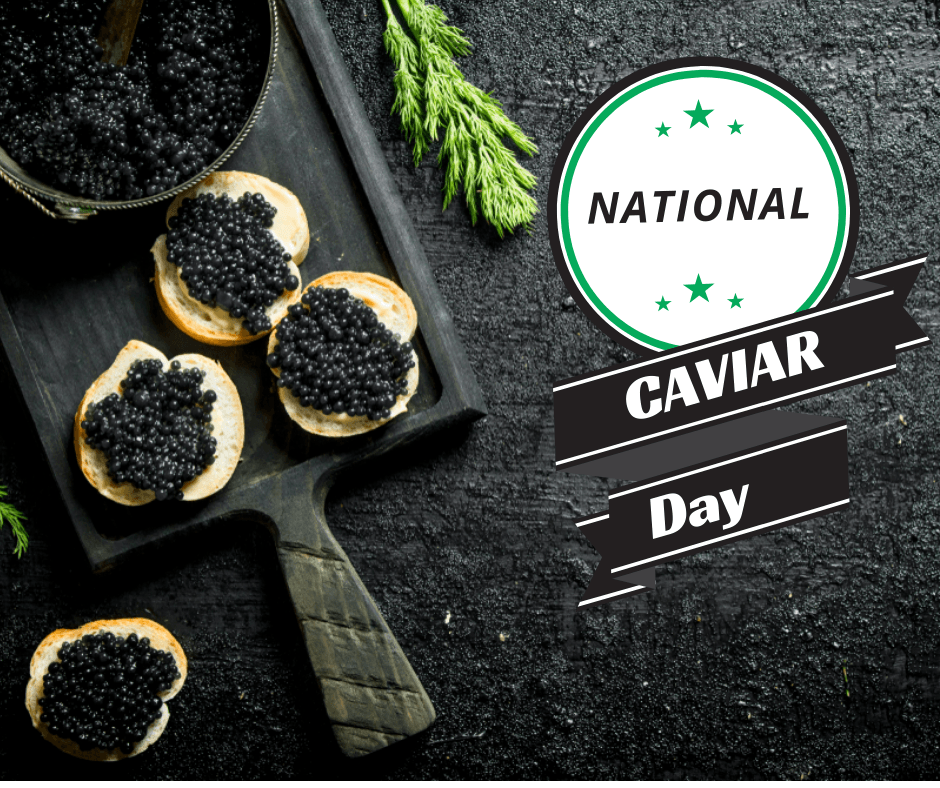Every July 18th, connoisseurs of fine dining around the globe celebrate National Caviar Day. This day is dedicated to the rich, luxurious delicacy known as caviar, a product renowned for its unique flavor and texture. This article offers an enlightening journey into the world of caviar, exploring its history, different types, and the delicate art of its production and consumption.
The History of Caviar
Caviar, the roe or eggs of the sturgeon fish, has a history steeped in luxury and extravagance. Its origins trace back to ancient Persia, where it was prized for its exquisite taste and supposed medicinal properties. Today, it maintains its status as a symbol of opulence, savored by culinary enthusiasts worldwide.
Types of Caviar: A Diverse Array of Tastes
The term ‘caviar’ refers to the roe from wild sturgeon in the Caspian and Black Sea. However, due to overfishing, genuine sturgeon caviar has become increasingly rare. Today, a variety of fish roes are marketed as caviar, including:
- Beluga: Considered the most prestigious caviar, Beluga is characterized by its large, firm grains and buttery flavor.
- Osetra: Smaller than Beluga, Osetra caviar is renowned for its nutty, fruity flavor and golden to dark brown color.
- Sevruga: The smallest of the sturgeon caviar, Sevruga is appreciated for its intense, rich flavor.
Savoring Caviar: The Art of Consumption
Eating caviar is an experience that engages all senses. It’s traditionally served chilled, on a bed of ice, and consumed using mother-of-pearl spoons, as metal can alter the caviar’s delicate taste. Many prefer to enjoy caviar in its purest form, though it is also commonly served with blinis and crème fraîche.
FAQs: Common Questions about Caviar
Q: What is caviar?
A: Caviar is the salt-cured roe of certain species of fish, most traditionally the sturgeon.
Q: Why is caviar so expensive?
A: The high cost of caviar is due to several factors, including the rarity of sturgeon, the complex and time-consuming process of harvesting and preparing the roe, and the luxury status associated with caviar.
Q: How is caviar consumed?
A: Caviar is typically served chilled and eaten directly off a non-metallic spoon. It can be enjoyed alone or paired with blinis and crème fraîche.
Conclusion: The Elegance of Caviar
As we celebrate National Caviar Day, we are reminded of the centuries-old tradition and refined elegance that caviar represents. Whether you are a seasoned caviar enthusiast or a curious novice, the world of caviar offers a unique culinary adventure defined by exquisite flavors and textures. On this special day, we appreciate the intricate artistry behind this coveted delicacy and its enduring mark on the world of fine dining.
